Abstract
Since 1985, nosocomial infections have been frequently treated with a new fluoroquinolone, pefloxacin, at the Cardiological and Neurological Hospital in Lyon. From 1986 to 1988, the incidence of resistance of clinical Staphylococcus epidermidis strains to pefloxacin increased from 31 to 57%. Dispersion of these resistant strains in the hospital environment was recognized when they were detected on 22% of staff members' fingers (139 samples were investigated) and in 28% of the environmental samples (180 were investigated). There was an association between carriage rate and work place. Most of the pefloxacin-resistant S. epidermidis were resistant to oxacillin, gentamicin, erythromycin, cotrimoxazole and fosfomycin. Intensive use of pefloxacin selected multiresistant S. epidermidis which became ubiquitous in the hospital environment.
Full text
PDF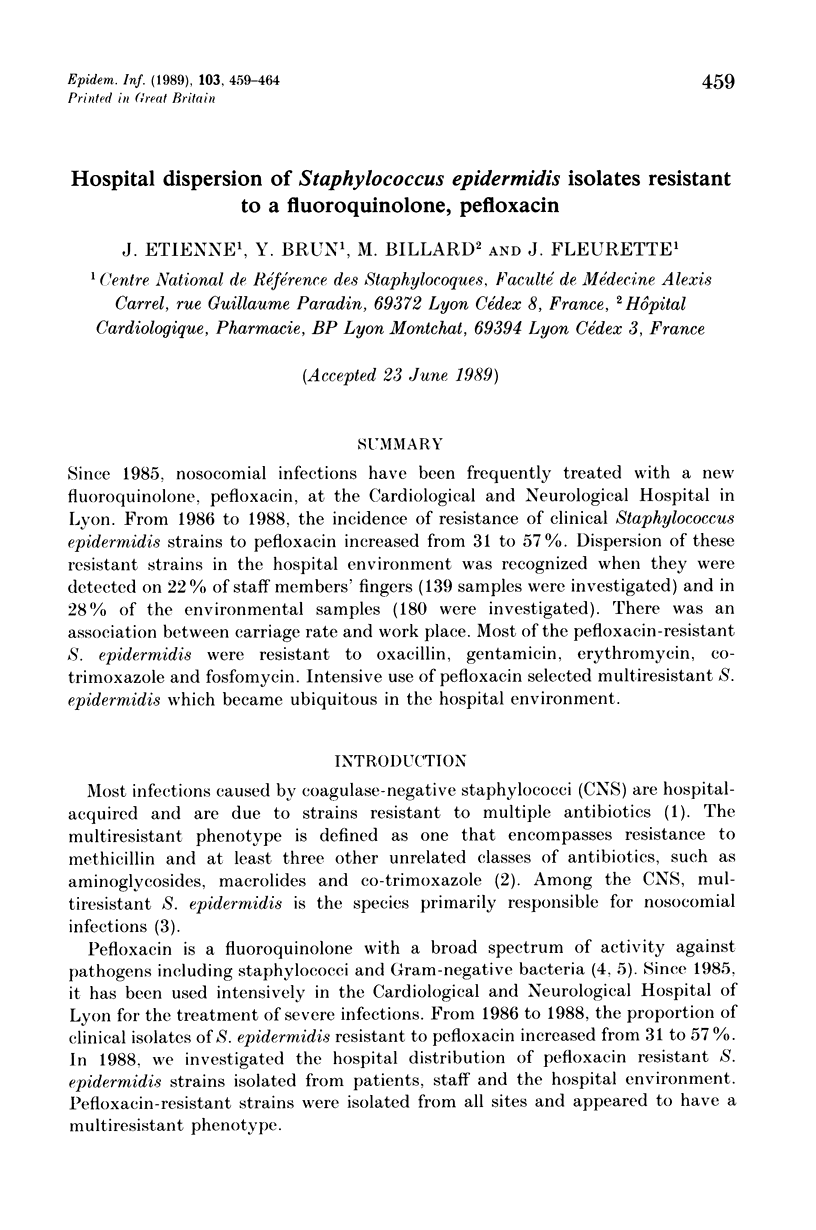
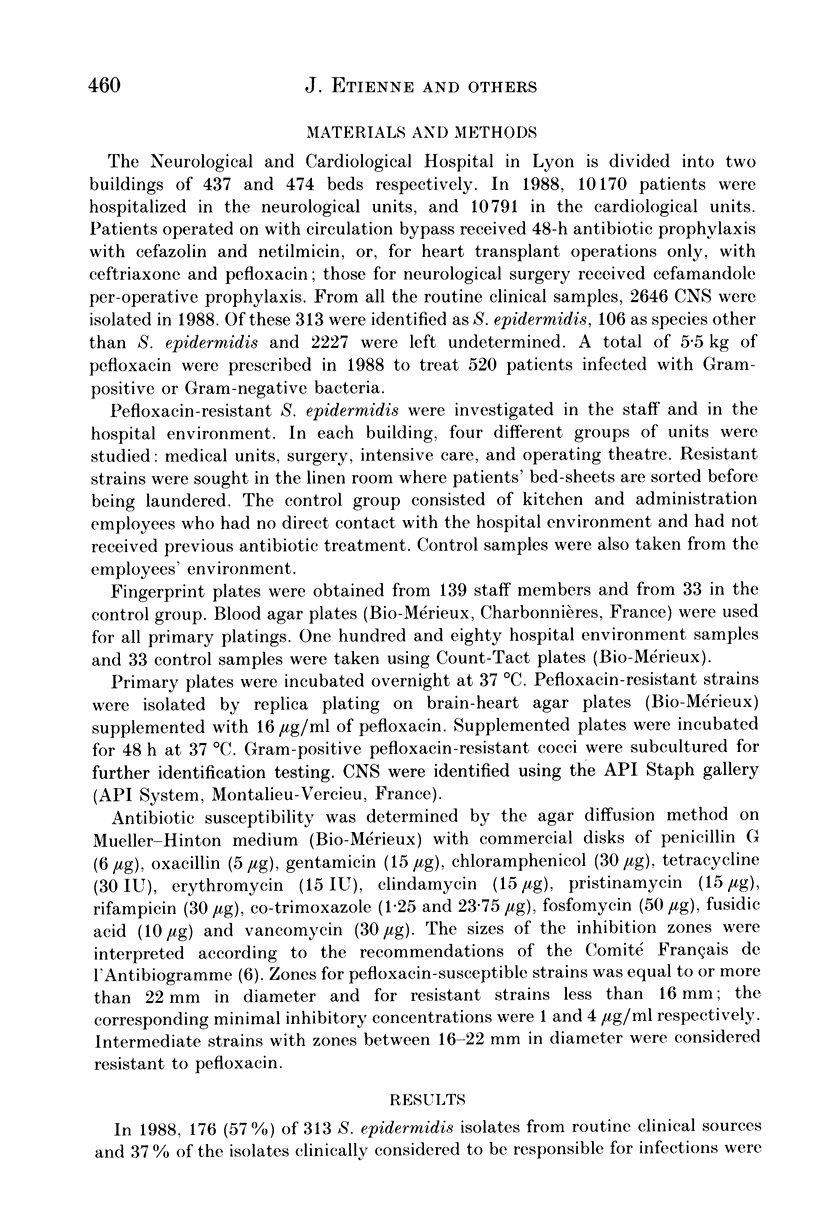
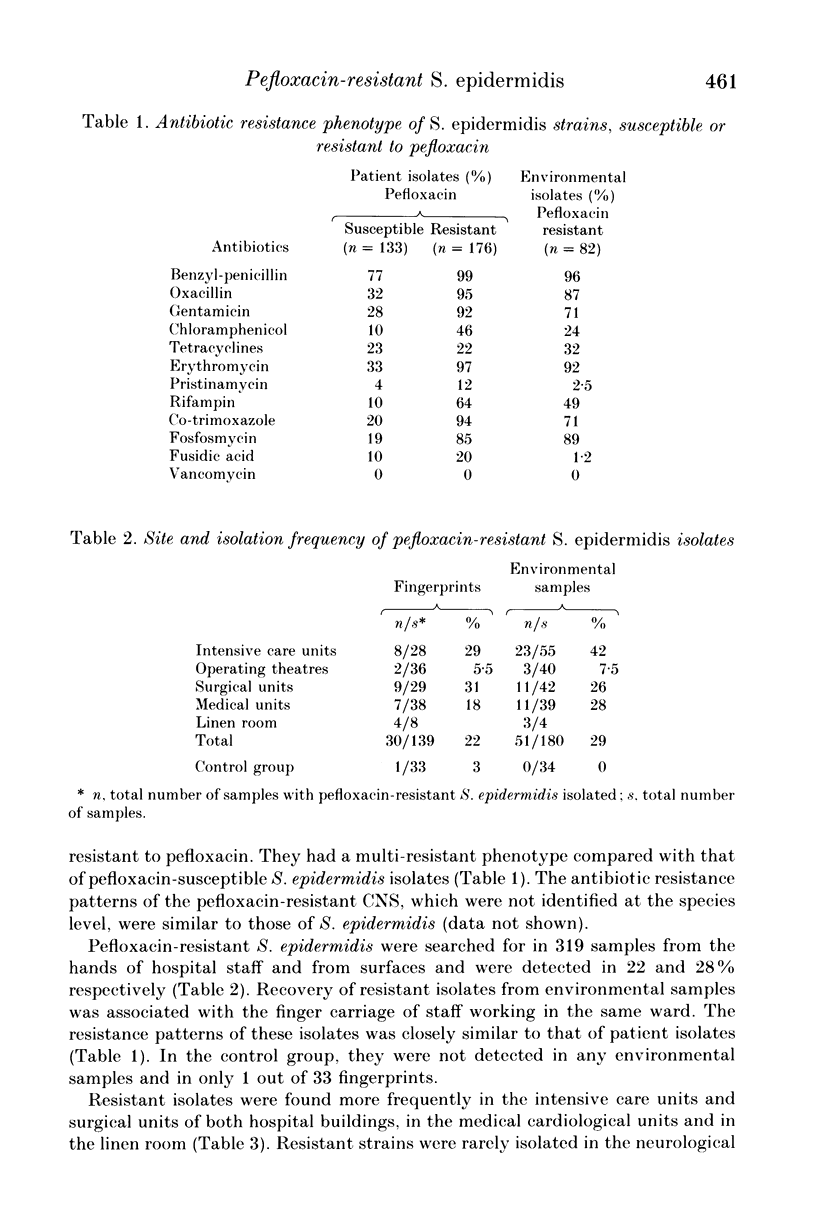
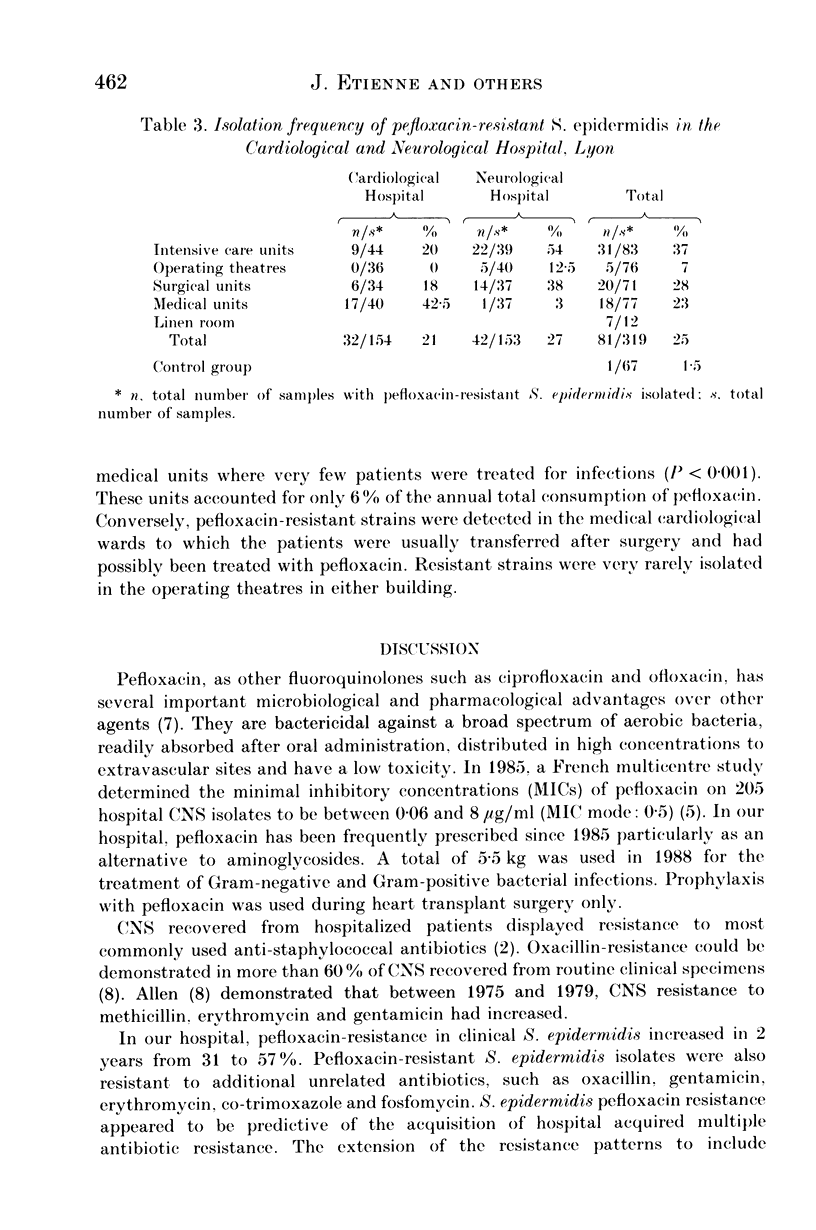
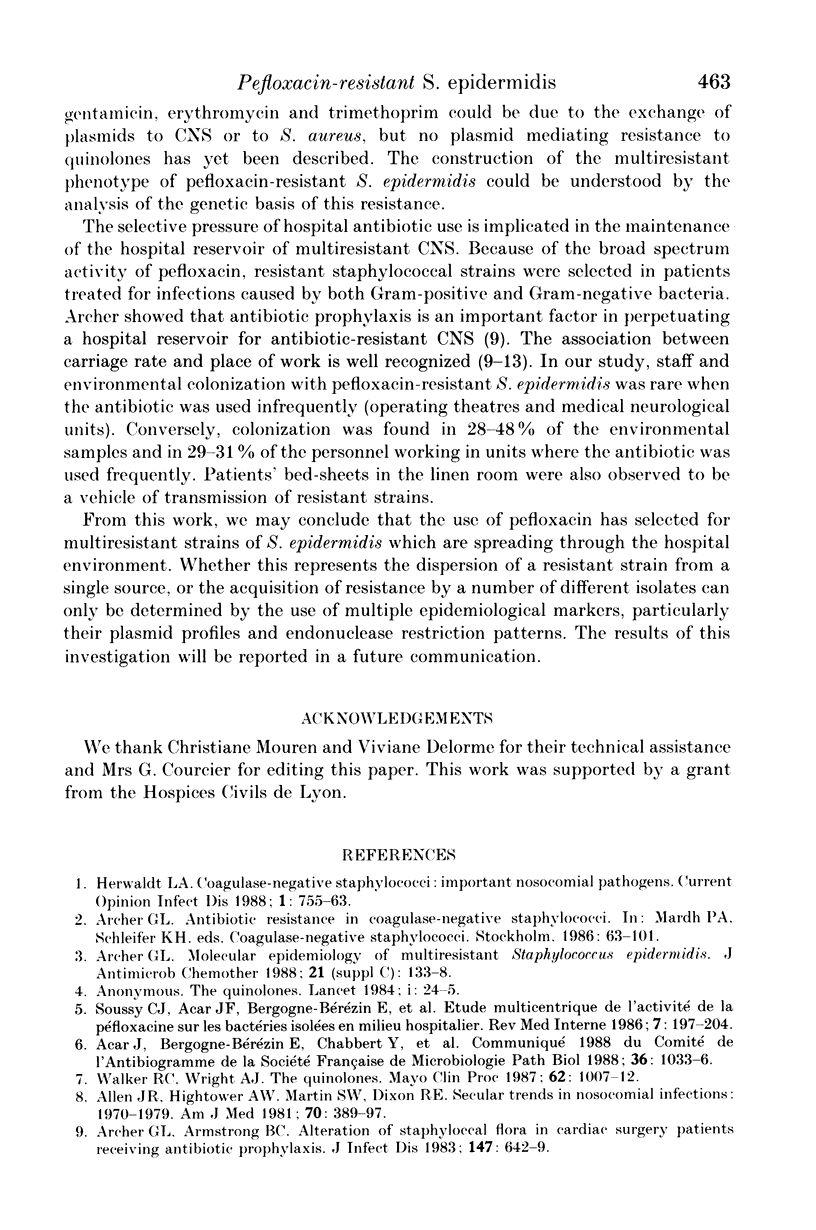
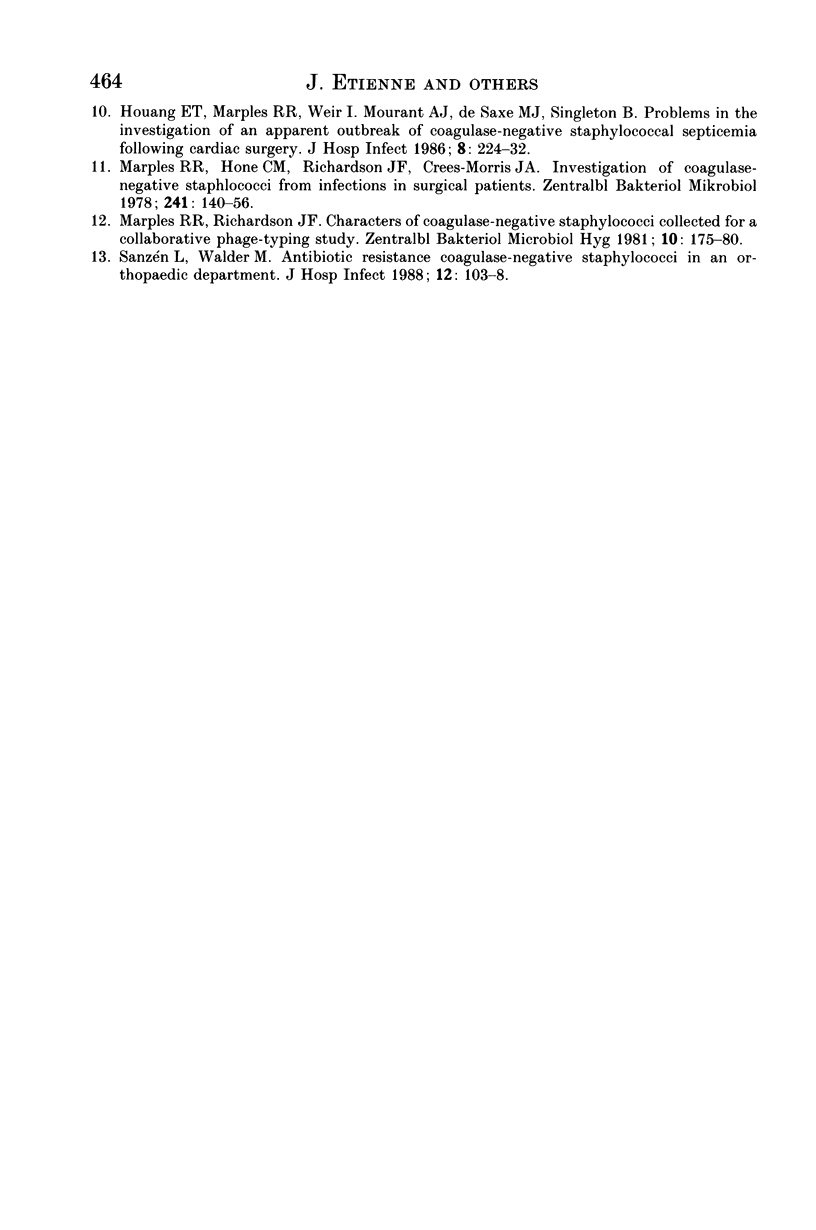
Selected References
These references are in PubMed. This may not be the complete list of references from this article.
- Allen J. R., Hightower A. W., Martin S. M., Dixon R. E. Secular trends in nosocomial infections: 1970-1979. Am J Med. 1981 Feb;70(2):389–392. doi: 10.1016/0002-9343(81)90777-4. [DOI] [PubMed] [Google Scholar]
- Archer G. L., Armstrong B. C. Alteration of staphylococcal flora in cardiac surgery patients receiving antibiotic prophylaxis. J Infect Dis. 1983 Apr;147(4):642–649. doi: 10.1093/infdis/147.4.642. [DOI] [PubMed] [Google Scholar]
- Archer G. L. Molecular epidemiology of multiresistant Staphylococcus epidermidis. J Antimicrob Chemother. 1988 Apr;21 (Suppl 100):133–138. doi: 10.1093/jac/21.suppl_c.133. [DOI] [PubMed] [Google Scholar]
- Houang E. T., Marples R. R., Weir I., Mourant A. J., de Saxe M. J., Singleton B. Problems in the investigation of an apparent outbreak of coagulase-negative staphylococcal septicaemia following cardiac surgery. J Hosp Infect. 1986 Nov;8(3):224–232. doi: 10.1016/0195-6701(86)90117-9. [DOI] [PubMed] [Google Scholar]
- Marples R. R., Hone R., Notley C. M., Richardson J. F., Crees-Morris J. A. Ivestigation of coagulase-negative staphylococci from infections in surgical patients. Zentralbl Bakteriol Orig A. 1978 Jul;241(1):140–156. [PubMed] [Google Scholar]
- Sanzén L., Walder M. Antibiotic resistance of coagulase-negative staphylococci in an orthopaedic department. J Hosp Infect. 1988 Aug;12(2):103–108. doi: 10.1016/0195-6701(88)90132-6. [DOI] [PubMed] [Google Scholar]
- Soussy C. J., Acar J. F., Bergogne-Berezin E., Christol D., Courtieu A. L., Duval J., Fleurette J., Lareng M. B., Morel C., Thabaut A. Etude multicentrique de l'activité de la péfloxacine sur les bactéries isolées en milieu hospitalier. Rev Med Interne. 1986 Mar;7(2):197–204. doi: 10.1016/s0248-8663(86)80114-x. [DOI] [PubMed] [Google Scholar]


